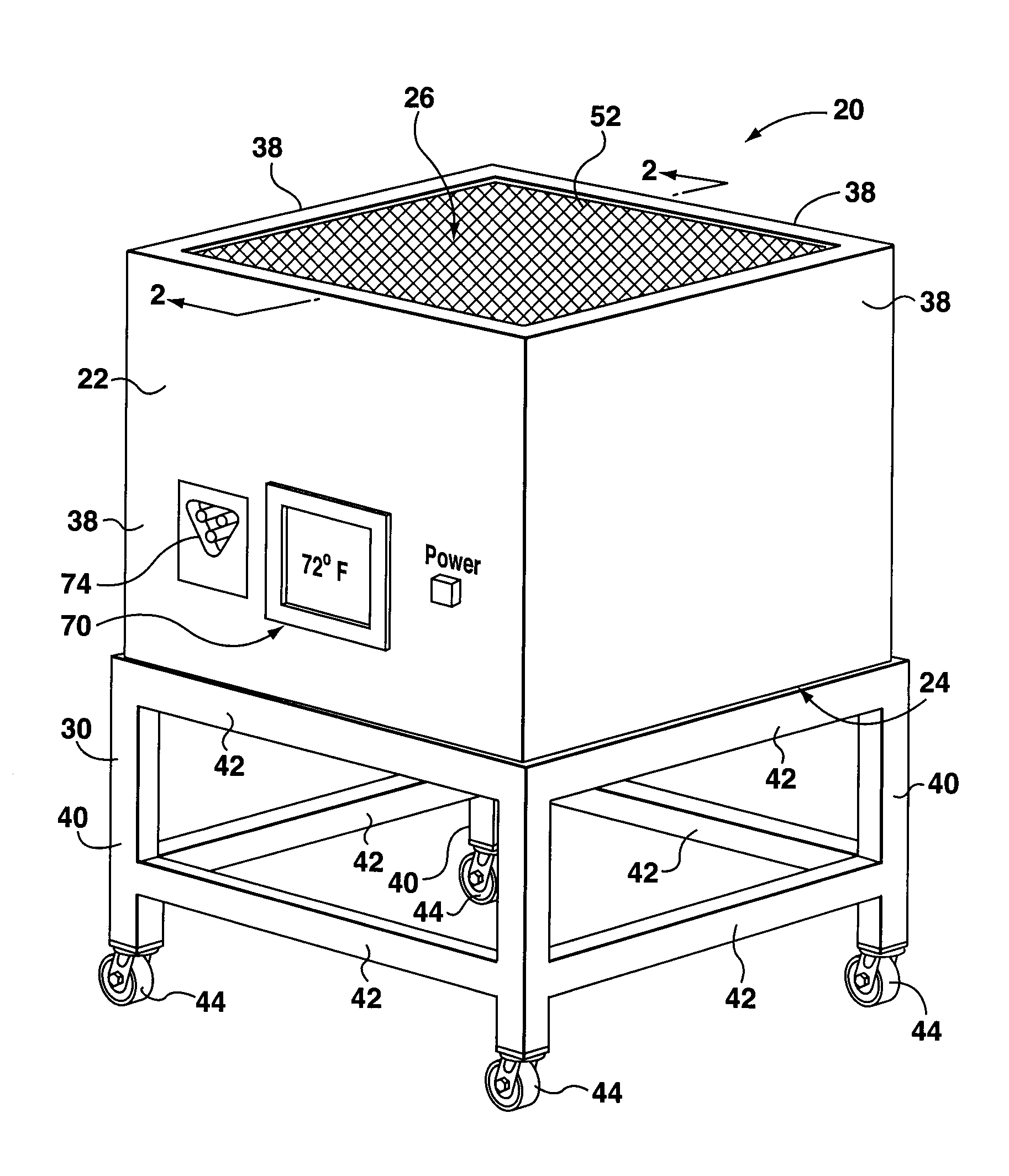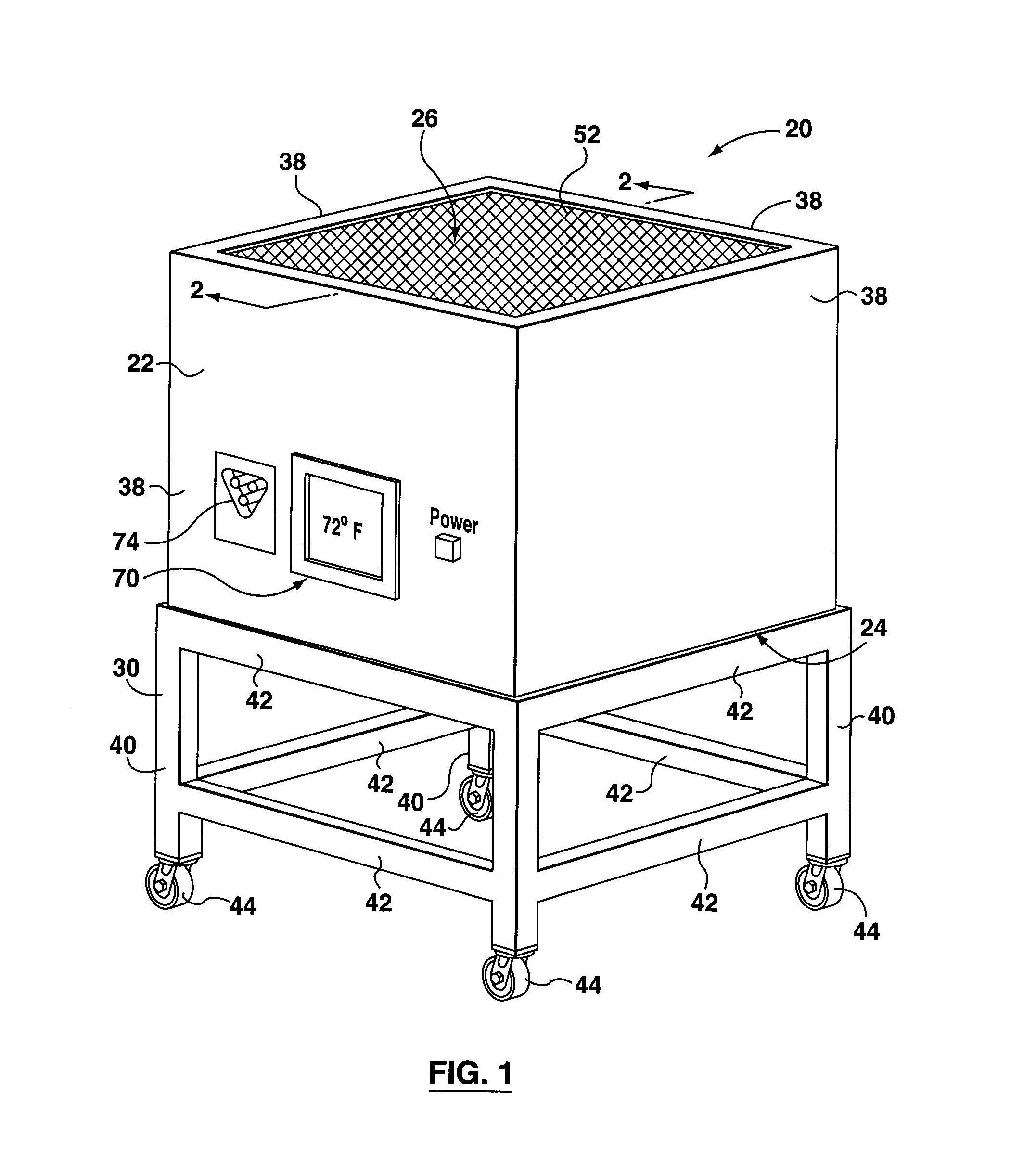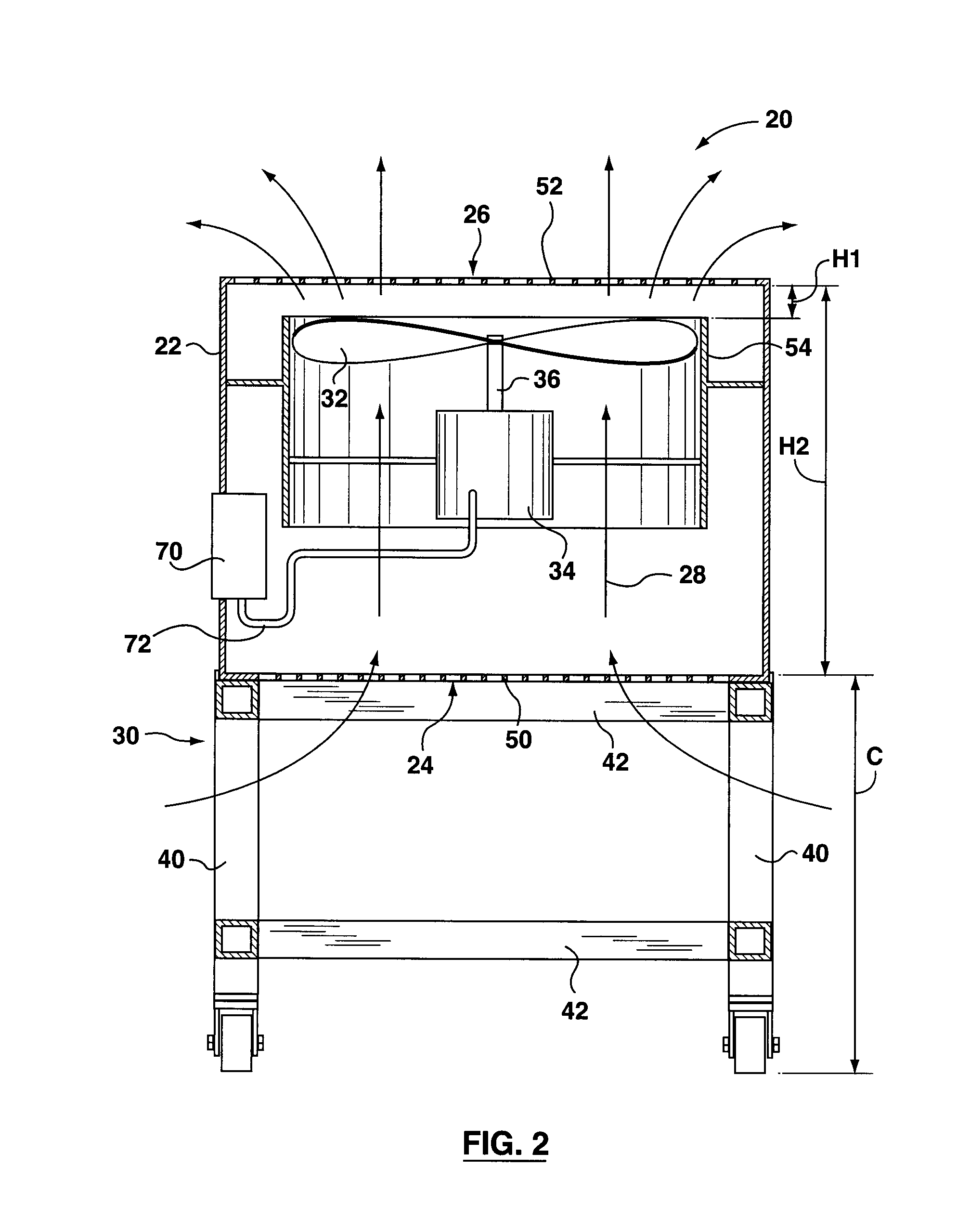Ventilator system for recirculation of air and regulating indoor air temperature
a technology of air circulation and ventilation system, which is applied in ventilation system, lighting and heating apparatus, heating types, etc., can solve the problems of high energy cost of industrial and commercial environments, poor air circulation efficiency of conventional hvac system, and inefficient hvac system, so as to improve comfort, improve air quality, and eliminate the effect of ceiling fan drafts
- Summary
- Abstract
- Description
- Claims
- Application Information
AI Technical Summary
Benefits of technology
Problems solved by technology
Method used
Image
Examples
Embodiment Construction
[0036]A number of factors and phenomena have been recognized herein as being worthy of consideration when designing apparatus and systems for circulating air.
[0037]One factor is de-lamination. De-lamination is a phenomenon whereby warm airflows and cool airflows tend to repel one another. For example, an upper layer of warm air will tend to float on top of a lower layer of cool air, generally without mixing between the layers. The upper and lower layers may be referred to as “stratified layers” having stratified layer “heights”. De-lamination is a result of different air temperatures, densities and turbulence intensity between cool and warm airflows, and generally results in energy waste and / or reduced efficiencies within an HVAC system.
[0038]It has been discovered that with higher velocity airflow, the temperature dependant de-lamination phenomenon begins to disappear, such that the heights of stratified layers tend to decrease.
[0039]For instance, in one example with stratified lay...
PUM
 Login to View More
Login to View More Abstract
Description
Claims
Application Information
 Login to View More
Login to View More - R&D
- Intellectual Property
- Life Sciences
- Materials
- Tech Scout
- Unparalleled Data Quality
- Higher Quality Content
- 60% Fewer Hallucinations
Browse by: Latest US Patents, China's latest patents, Technical Efficacy Thesaurus, Application Domain, Technology Topic, Popular Technical Reports.
© 2025 PatSnap. All rights reserved.Legal|Privacy policy|Modern Slavery Act Transparency Statement|Sitemap|About US| Contact US: help@patsnap.com



